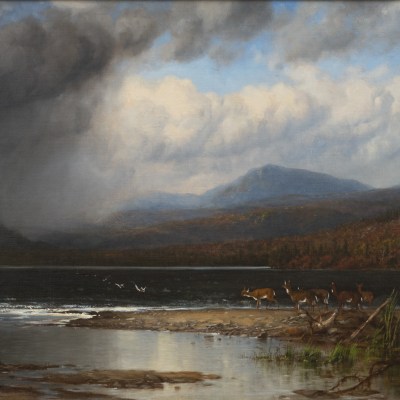
(1828–1901)
James M. Hart was born May 10, 1828, in Kilmarnock, Ayreshire Scotland and immigrated to America in 1831 with his brother William and sister Julie Hart Beers, who were also painters. The Harts grew up in Albany, New York, where their careers began in a carriage decorator’s shop. James went to Düsseldorf, Germany, in 1850 for three years of art study before returning briefly to Albany, and then to New York City where he established a permanent studio. There he prospered as an artist and was elected an associate of the prestigious National Academy of Design in 1859 and then a full member in 1860, serving three years as its vice president. Hart was a visible force in the art world, encouraging others to become painters and contributing more than eighty paintings to National Academy exhibitions between 1853 and 1901. He also was a frequent exhibitor at the Brooklyn Art Association between 1863–1883, and at the Artists’ Fund Society. He exhibited in more than twenty American cities from Boston to San Francisco, Chicago to Washington D.C. as well as in Europe. James Hart’s name continually turns up in the context of important events and achievements among the group of Hudson River School artists.
Hart was particularly prominent during the 1860s and 1870s when his pastoral scenes with cattle were in vogue among his wealthy clientele. Hart’s artistic powers are quite evident in his careful elucidation of flora, languid atmosphere, and light; while his use of limited palette heightens the essential tranquility of his magnificent idyllic paintings. Hart’s work is housed in prestigious private collections and institutions including the Metropolitan Museum of Art, Museum of Fine Art, Boston, New York State Historical Society, National Gallery of Art, Washington, D. C.; and the Albany Institute, New York.
